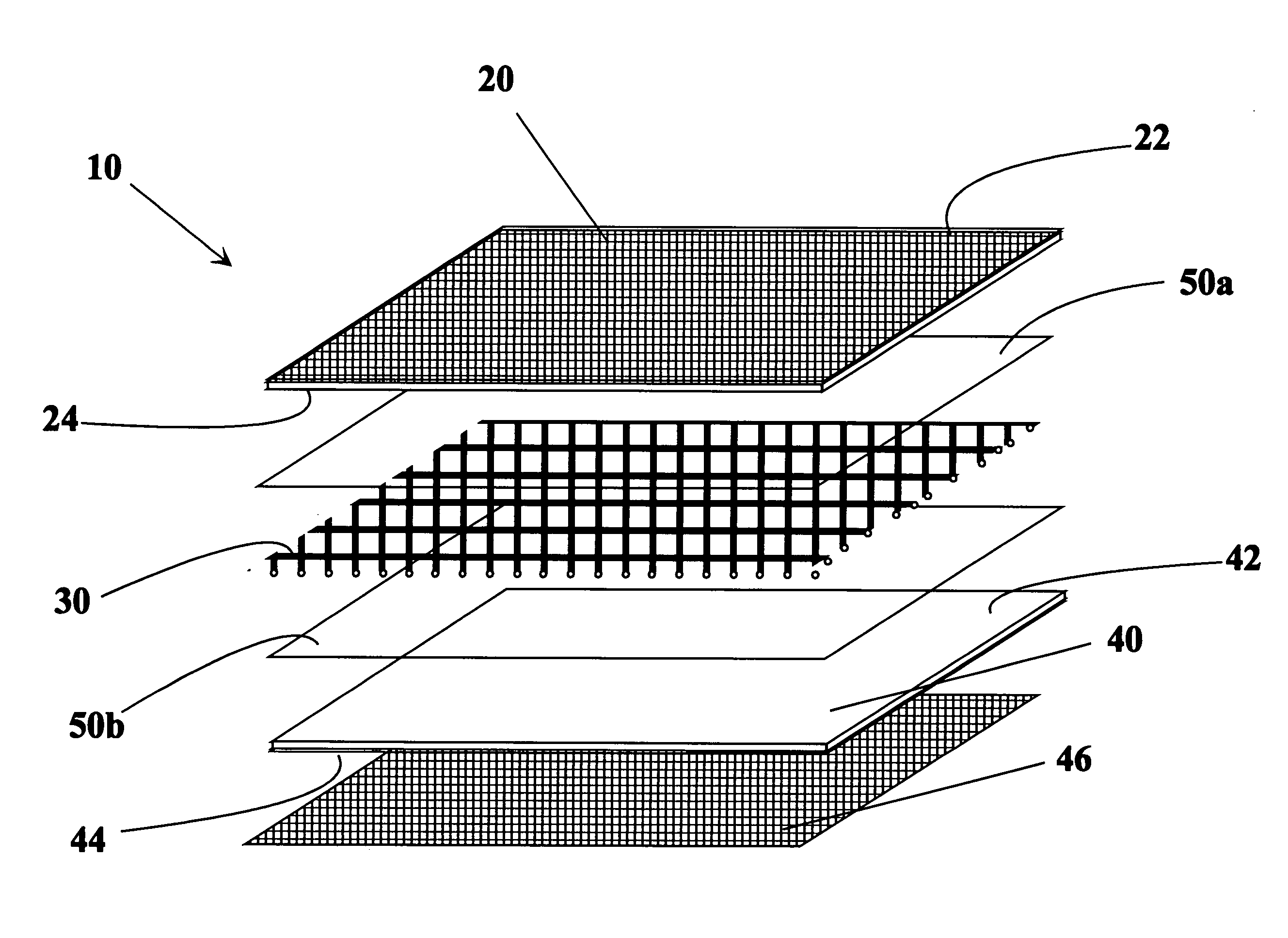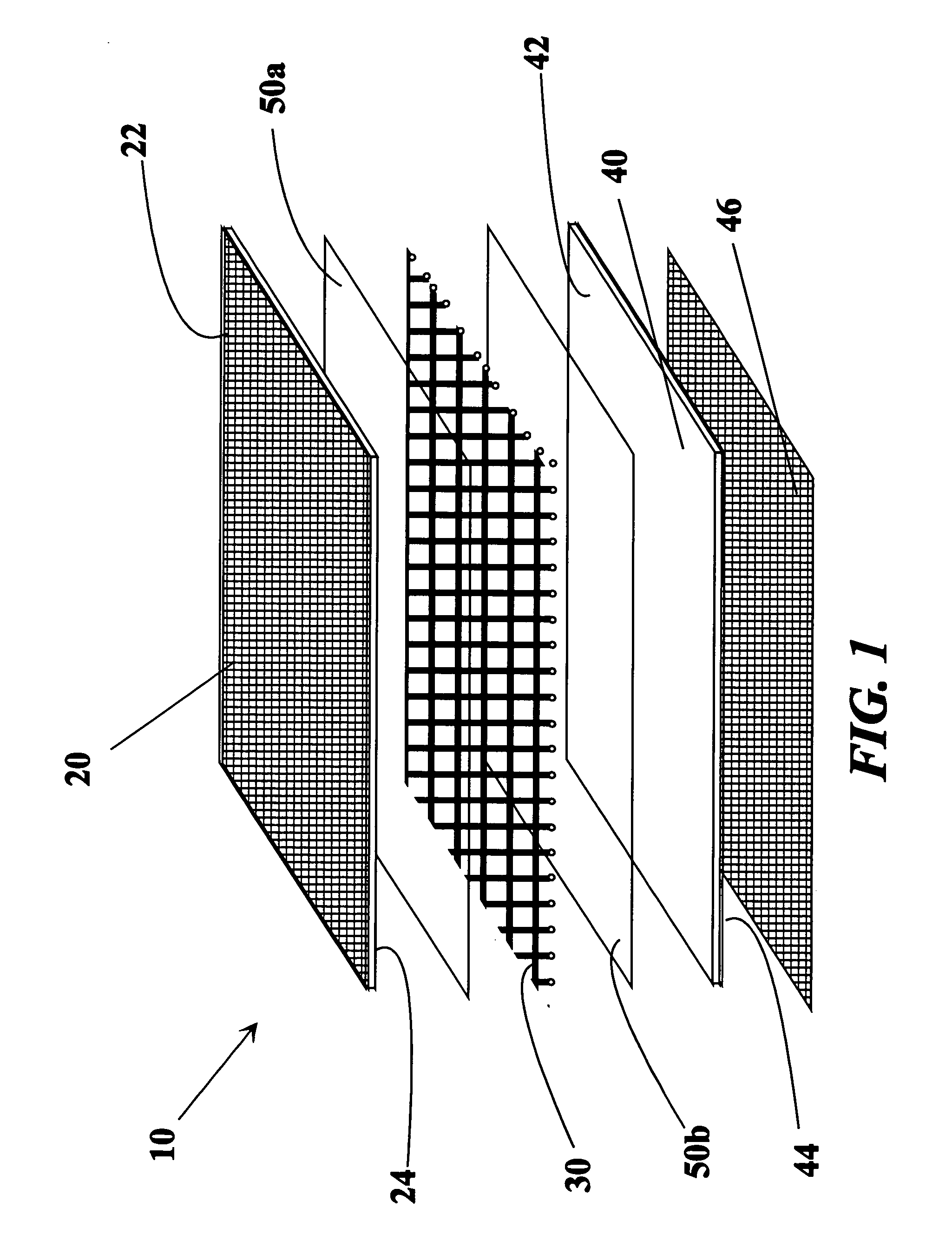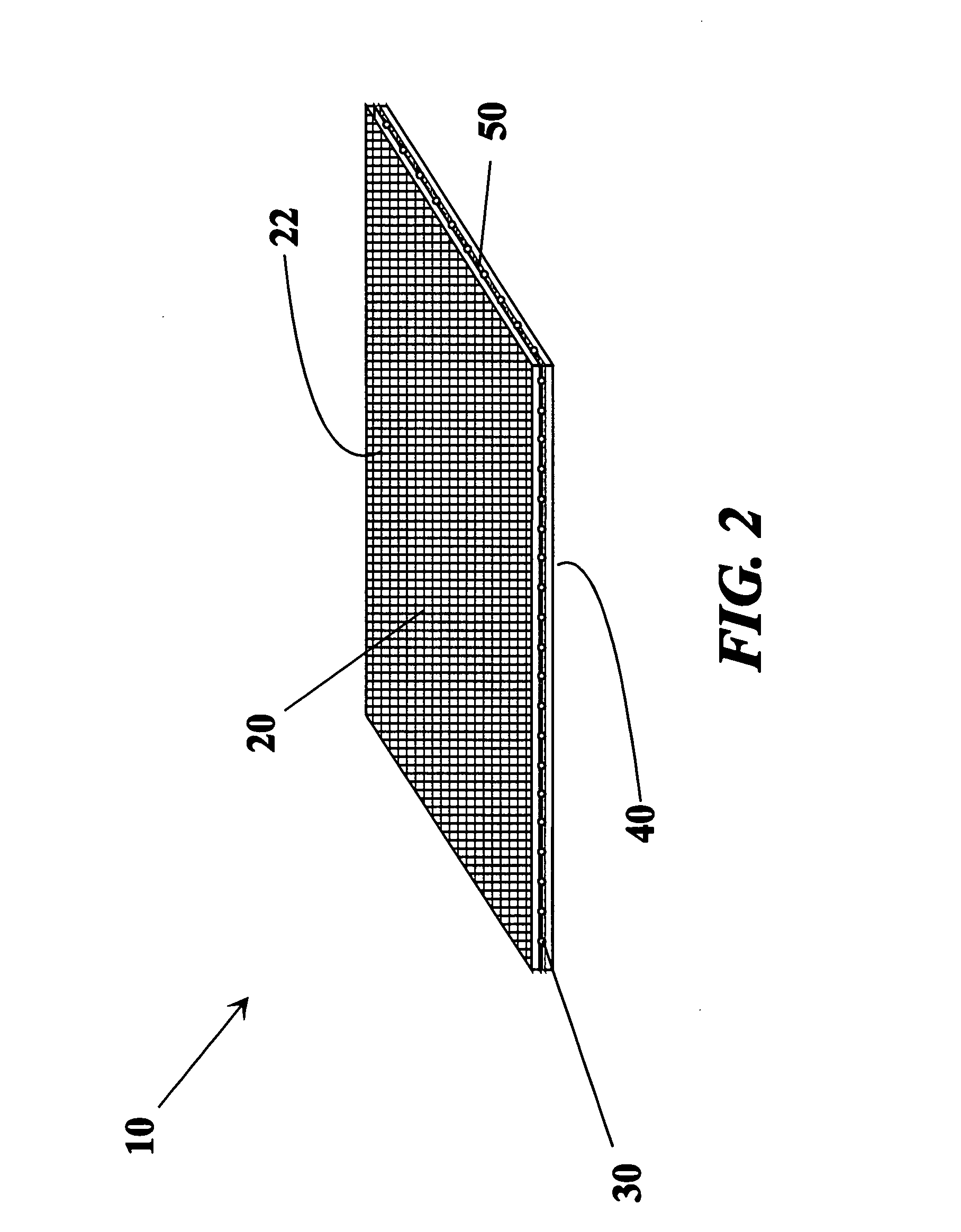Textured and printed membrane that simulates fabric
- Summary
- Abstract
- Description
- Claims
- Application Information
AI Technical Summary
Benefits of technology
Problems solved by technology
Method used
Image
Examples
Embodiment Construction
[0021] The invention is a textured waterproof membrane 10 that is suitable for displays, awnings and other applications, where it is highly desired that the material looks like fabric, but has the weather, mold and mildew resistance, and cleanability that is only obtainable with certain polymeric membrane materials. The textured membrane 10 is substantially a laminate, and as shown in FIG. 1, the laminate is comprised of a plasticized PVC top layer 20 having an embossed front side 22 and a reverse side 24; a fabric layer 30; a plasticized PVC bottom layer 40 having a forward side 42 and a printed bottom side 44 with a printed layer of ink 46; and a coextensive adhesive 50 (50a+50b), where the coextensive adhesive 50 extends from the bottom layer 40 through the fabric layer 30 to the top layer 20. The coextensive adhesive 50 is a PVC plastisol, and it bonds all the layers into the unified textured waterproof membrane 10, as shown in FIG. 2. As can be seen, the PVC plastisol 50 permea...
PUM
| Property | Measurement | Unit |
|---|---|---|
| Fraction | aaaaa | aaaaa |
| Fraction | aaaaa | aaaaa |
| Fraction | aaaaa | aaaaa |
Abstract
Description
Claims
Application Information
 Login to View More
Login to View More - R&D
- Intellectual Property
- Life Sciences
- Materials
- Tech Scout
- Unparalleled Data Quality
- Higher Quality Content
- 60% Fewer Hallucinations
Browse by: Latest US Patents, China's latest patents, Technical Efficacy Thesaurus, Application Domain, Technology Topic, Popular Technical Reports.
© 2025 PatSnap. All rights reserved.Legal|Privacy policy|Modern Slavery Act Transparency Statement|Sitemap|About US| Contact US: help@patsnap.com



